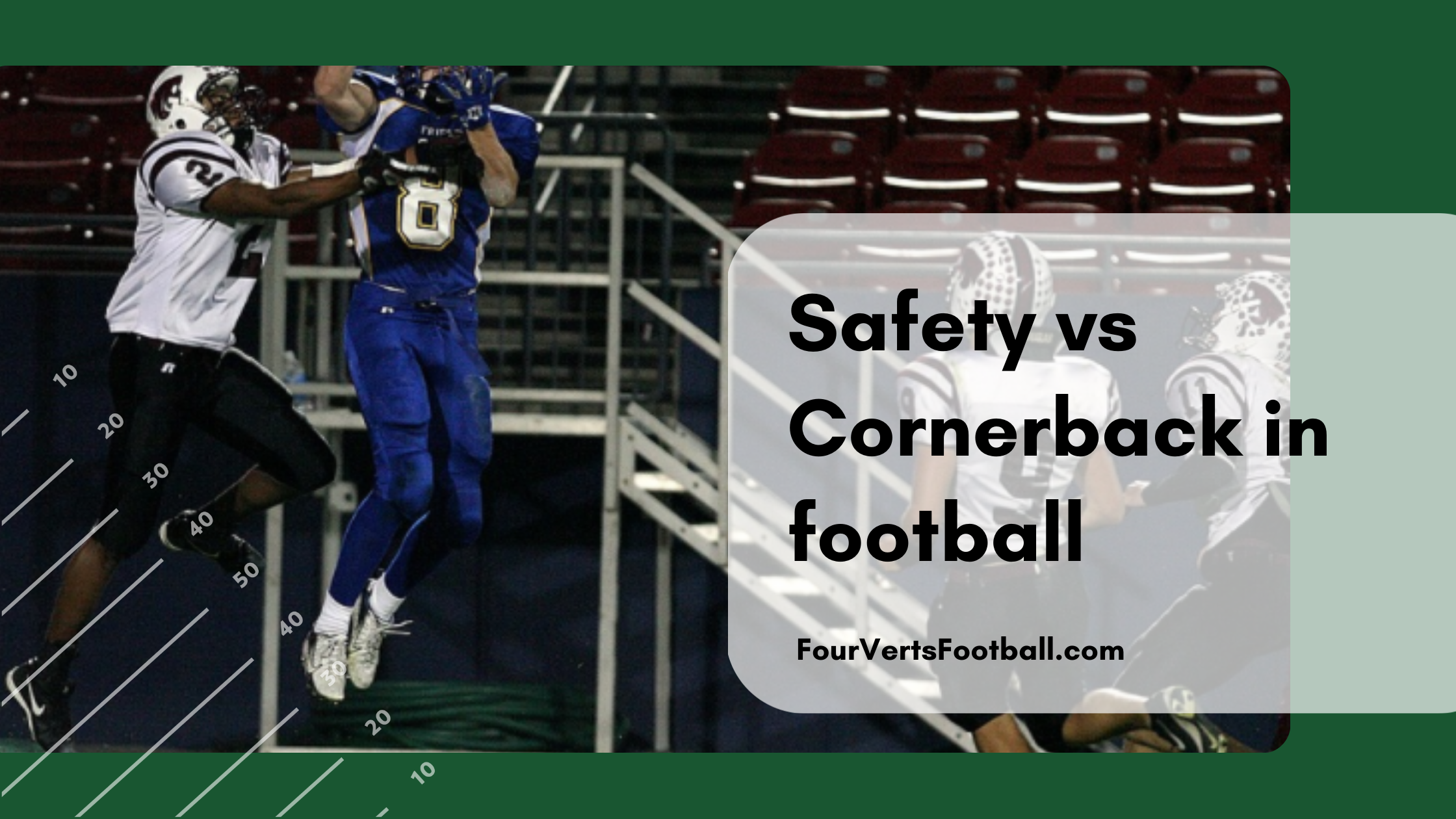Though both cornerbacks and safeties are members of the secondary these two positions are far from the same.
Cornerbacks are primarily tasked with covering the opposing teams top receivers. While safeties often act as the last line of defense. Stopping teams from completing deep passes into their defensive backfield.
Throughout this article, we are going to break down all the major factors of each position and how they differ from one another.
Positioning
Positioning is one of the largest differences between safeties and corners. At the start of any given player cornerbacks are going to be lined up out wide near the sideline.
In most formations, there is one cornerback lined up on each side of the field covering an opposing wide receiver.
Safeties on the other hand tend to line up in the middle of the field. These safeties are anywhere from five to fifteen yards back from the line of scrimmage. In most cases, the free safety will be lined up deep into the backfield while the strong safety will be closer to the line of scrimmage.
Responsibilities
Both these defensive positions focus on stopping passes and bringing down running backs. But their specific responsibilities in each play are quite different.
Running Plays
When it comes to running plays cornerbacks are less involved than safeties. Once a cornerback determines it is a run he will attempt to fight through the block of the wide receiver in order to tackle the ball carrier.
But since cornerbacks are usually lined up close to the sideline they rarely make tackles unless the run comes in their direction.
Safeties on the other hand are in the middle of the field meaning they are often involved in the run game. The strong safety will have to fight through blocks of tight ends or linebackers in order to bring the runner down.
Safeties act as the last line of defense on running plays. They are often the determining factor of a run going for ten yards or for fifty.
Passing Plays
When it comes to passing both of these positions can have many different responsibilities. Though for the most part safeties and corners have noticeably different roles.
Cornerbacks will start each play lined up against the opposing team’s top two receivers. One on each side of the field.
Once the play starts the cornerback will cover this receiver oftentimes with no help in the short or intermediate area. Once the receiver gets deeper down the field the cornerback will often receive help from the free safety.
The free safety will be waiting deep on these plays to ensure no receivers get open down the field.
Strong safeties sometimes help with deep coverage as well. Though they are often assigned man coverage on passing plays. Strong safeties will usually line up against the opposing team’s tight end or third/fourth receiver.
On some occasions, these positions may blitz which means they will rush the quarterback and attempt to bring him down.
Build
The build of these positions are quite similar though safeties tend to be a little bit larger. This is especially true for strong safeties that have the duties of covering and fighting off blocks of tight ends.
Both of these positions require average height and a slim build with little to no body fat.
Pay Scale
When it comes to getting paid as a professional, cornerbacks outearn safeties. This is likely due to their ability to shut down the opposing team’s top wide receiver.
The top paid cornerback in the NFL make twenty million dollars a year with the second-highest earner only slightly behind with nineteen and a half million.
The highest-paid safety on the other hand makes fifteen million a year. Still quite a nice payday but twenty-five percent less than the top cornerback.

